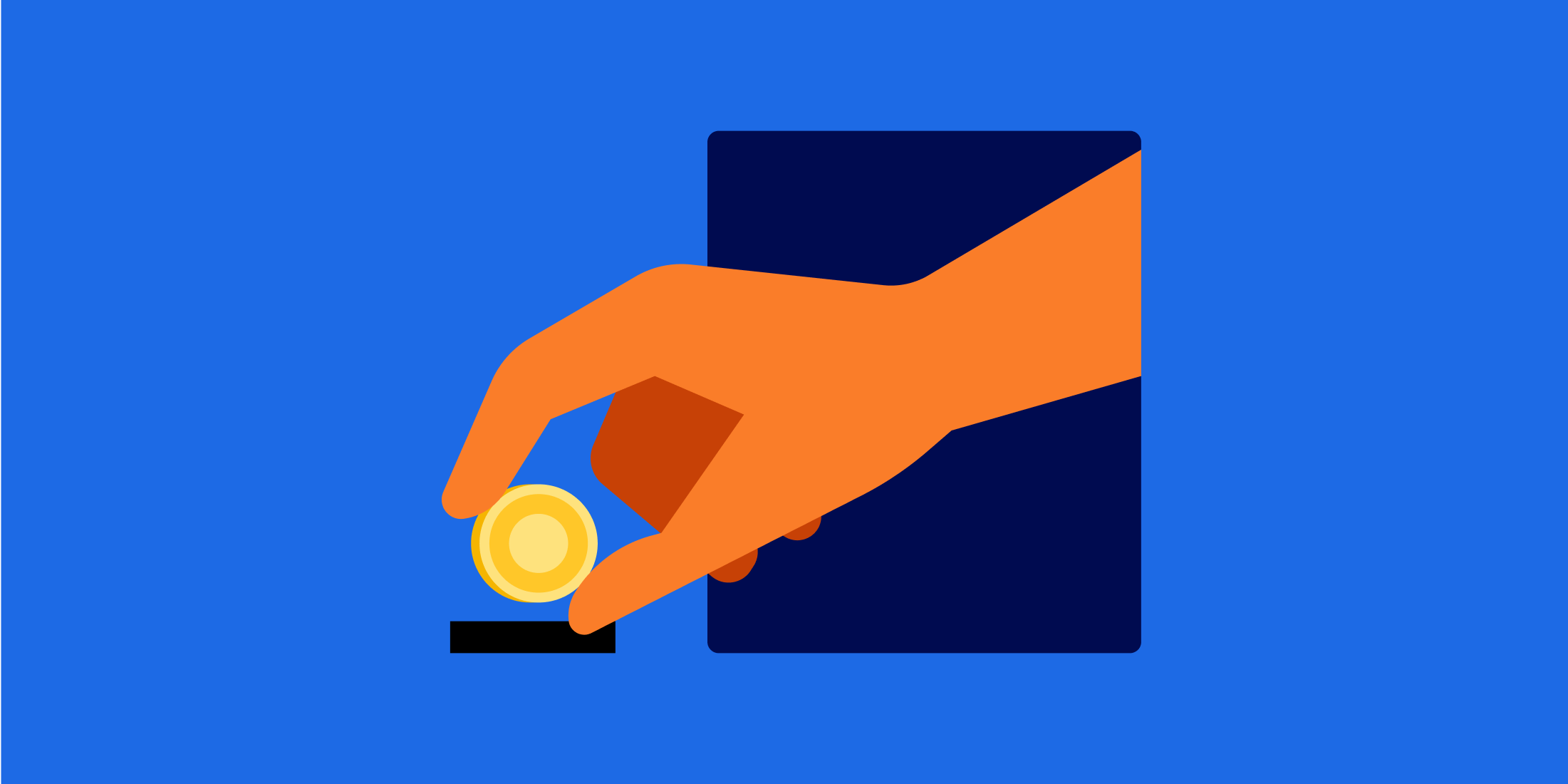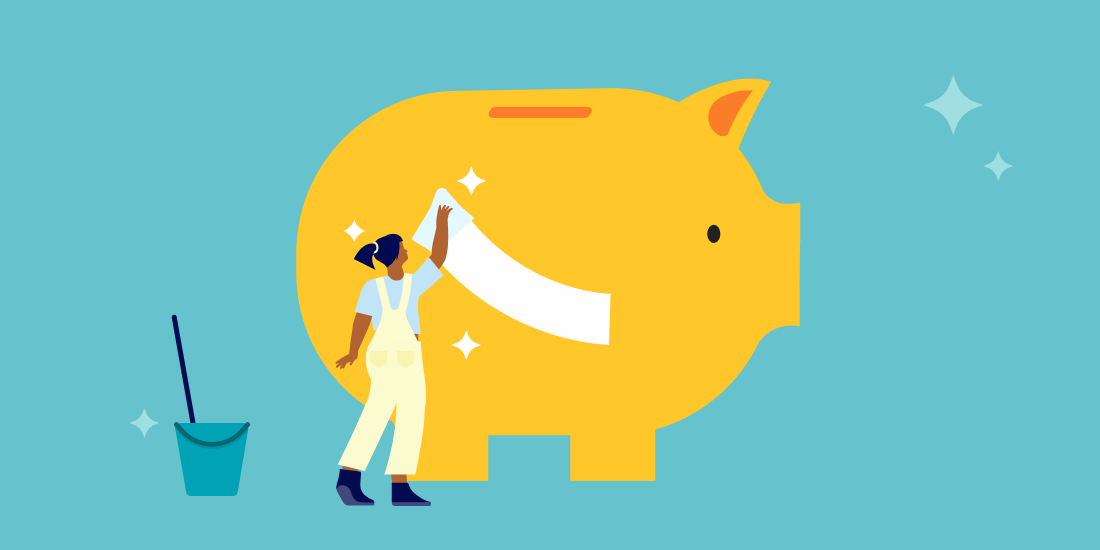Emergency Funds

Featured articles
-
![]()
How to course correct when you simply can't stay the course
De-risking during market volatility can be costly. Here’s how to do it without breaking the ...
How to course correct when you simply can't stay the course De-risking during market volatility can be costly. Here’s how to do it without breaking the bank. The best course of action during market volatility is often inaction. That’s because selling riskier assets at a loss locks in those losses. It foregoes their potential for future growth, and it might also trigger capital gains taxes in the process. But if taking some sort of action feels necessary, then modestly reducing your overall risk exposure can be a reasonable alternative. Consider dialing down your existing stock allocation by a few percentage points, or lower the costs of recalibrating by using your future deposits instead. Either way, the solution may be the same: sprinkling in more bonds. Consider bonds to calm your investing nerves When people talk about diversification, equities like international stocks get most of the attention. But no less important in the role of managing risk are bonds. These are the loans given to governments and companies by investors, and while they're not completely risk-free (no asset is), the relatively-modest interest they tend to pay out can feel like a windfall when stock values are plunging. They won’t negate all of the volatility of stocks, but they can help smooth things out and preserve capital. This is why all of our recommended allocations include holding at least some bonds. One way to de-risk some of your future investing is with one of our portfolios made up of both stocks and bonds (Core, Value Tilt, etc.). We’ll recommend a risk level based on your goal, but we make it easy to dial up the bond allocation to your preference. Over time, you can slowly finetune things until your collective risk feels right. Or you can let us automatically adjust it based on your target date. We also offer two portfolios comprised entirely of bonds, each one designed for a different use: The BlackRock Target Income portfolio, designed to help you limit market volatility, preserve wealth, and generate income. The Goldman Sachs Tax-Smart Bonds portfolio, designed for high-income individuals seeking a higher after-tax yield compared to a cash account. Don’t forget about the role of cash One of the best ways to mitigate your overall financial risk is by shoring up your emergency fund, which may include a high-yield cash account like our Cash Reserve. Imagine losing your income stream, and how much time you'd want to get back on your feet. A good place to start is 3-6 months' worth of your essential expenses, but your right amount is whatever helps you sleep more soundly at night. Cash Reserve offered by Betterment LLC and requires a Betterment Securities brokerage account. Betterment is not a bank. FDIC insurance provided by Program Banks, subject to certain conditions. Learn more. Steadying the ship during unsteady times As we mentioned up front, right-sizing your risk during downturns isn’t always cheap. But there are ways to minimize the costs. Lowering your risk profile incrementally is one of them, and stretching out your safety net is another. Either way, it’s okay to recalibrate your risk tolerance from time-to-time, and you can do it wisely with Betterment. -
![]()
How much cash is too much cash to be in savings?
Cash is great. But can you have too much? And what should you do with it? Let’s find out.
How much cash is too much cash to be in savings? Cash is great. But can you have too much? And what should you do with it? Let’s find out. The main point: If you have too much cash in savings, you may be missing out on growth from stock or bond investments. Consider having cash in savings for short-term needs and putting the rest into investing accounts. Facts about cash in savings: Cash in savings is liquid, meaning it is easy to access when you need to withdraw it for spending. Cash in savings is also low risk, meaning your money should not decrease in value like stocks if you stay within FDIC insurance limits. But—cash in savings does not have the opportunity to grow compared to cash in stocks and bonds, especially when savings rates are not keeping up with inflation. Finding a balance: To strike the right balance between cash and investments, consider the following: Cash is a secure option for your emergency fund. Most experts recommend having three to six months of living expenses saved. Cash is the lowest-risk option but you can use a mix of bonds and stock too. Take a close look at your situation and save what feels right for you. After that, take a look at your extra cash. Cash and investments can also be right for your short-term goals. Having cash in savings can be wise for short-term goals (we consider anything under 12 months short-term). But depending on how you’re defining short-term and your risk tolerance, you may consider putting some cash for shorter-term goals in bonds and stocks. Investments can support your long-term goals. For most goals longer than 12 months, consider putting your cash into stock and bond investments. While investing involves more risk, stocks have had greater long-term gains historically than leaving your cash in savings. We have options for you: Open a Cash Reserve account if you’re looking for a secure way to save. It’s a high-yield cash account that helps grow your savings while offering FDIC insurance up to $2 million ($4 million for joint accounts) through our program banks (up to $250,000 of coverage for each insurable capacity—e.g., individual or joint—at up to eight Program Banks), subject to certain conditions. We, Betterment, are not a bank ourselves. Cash Reserve offered by Betterment LLC and requires a Betterment Securities brokerage account. Betterment is not a bank. FDIC insurance provided by Program Banks, subject to certain conditions. Learn more. Open an investing account for your long-term goals. We’ll help assess your risk tolerance, provide investment recommendations, and make it easy to access expert-built portfolios to get you closer to your goals. -
![]()
Three steps to size up your emergency fund
Strive for at least three months of expenses while taking these factors into consideration.
Three steps to size up your emergency fund Strive for at least three months of expenses while taking these factors into consideration. Imagine losing your job, totaling your car, or landing in the hospital. How quickly would your mind turn from the shock of the event itself to worrying about paying your bills? If you’re anything like the majority of Americans recently surveyed by Bankrate, finances would add insult to injury pretty fast: Only around 2 in 5 Americans would pay for an emergency from their savings In these scenarios, an emergency fund can not only help you avoid taking on high-interest debt or backtracking on other money goals, it can give you one less thing to worry about in trying times. So how much should you have saved, and where should you put it? Follow these three steps. 1. Tally up your monthly living expenses — or use our shortcut. Coming up with this number isn’t always easy. You may have dozens of regular expenses falling into one of a few big buckets: Food Housing Transportation Medical When you create an Emergency Fund goal at Betterment, we automatically estimate your monthly expenses based on two factors from your financial profile: Your self-reported household annual income Your zip code’s estimated cost of living You’re more than welcome to use your own dollar figure, but don’t let math get in the way of getting started. 2. Decide how many months make sense for you We recommend having at least three months’ worth of expenses in your emergency fund. A few scenarios that might warrant saving more include: You support others with your income Your job security is iffy You don’t have steady income You have a serious medical condition But it really comes down to how much will help you sleep soundly at night. According to Bankrate’s survey, nearly ⅔ of people say that total is six months or more. Whatever amount you land on, we’ll suggest a monthly recurring deposit to help you get there. We’ll also project a four-year balance based on your initial and scheduled deposits and your expected return and volatility. Why four years? We believe that’s a realistic timeframe to save at least three months of living expenses through recurring deposits. If you can get there quicker and move on to other money goals, even better! 3. Pick a place to keep your emergency fund We recommend keeping your emergency fund in one of two places: cash—more specifically a low-risk, high-yield cash account—or a bond-heavy investing account. A low-risk, high-yield cash account like our Cash Reserve may not always keep pace with inflation, but it comes with no investment risk. Cash Reserve offered by Betterment LLC and requires a Betterment Securities brokerage account. Betterment is not a bank. FDIC insurance provided by Program Banks, subject to certain conditions. Learn more. An investing account is better suited to keep up with inflation but is relatively riskier. Because of this volatility, we currently suggest adding a 30% buffer to your emergency fund’s target amount if you stick with the default stock/bond allocation. There also may be tax implications should you withdraw funds. Your decision will again come down to your comfort level with risk. If the thought of seeing your emergency fund’s value dip, even for a second, gives you heartburn, you might consider sticking with a cash account. Or you can always hedge and split your emergency fund between the two. There’s no wrong answer here! Remember to go with the (cash) flow There’s no final answer here either. Emergency funds naturally ebb and flow over the years. Your monthly expenses could go up or down. You might have to withdraw (and later replace) funds. Or you simply might realize you need a little more saved to feel secure. Revisit your numbers on occasion—say, once a year or anytime you get a raise or big new expense like a house or baby—and rest easy knowing you’re tackling one of the most important financial goals out there.
Considering a major transfer? Get one-on-one help with one of our experts. Explore our licensed concierge
All Emergency Funds articles
-
![]()
Top 8 financial to-dos for new parents
Top 8 financial to-dos for new parents Aug 8, 2024 4:18:54 PM The moment we knew we had a newborn on the way, my wife and I dived into all the standard parenting research. Car seats. Strollers. Baby-led weaning. It can be overwhelming. As a CFP®, I also know that planning our baby’s future goes beyond diapers and late-night feedings. From creating a solid financial foundation to navigating the complexities of insurance and estate planning, financial decisions can seem daunting. But with a little planning—and some practical tips— you can confidently pave the way for this exciting journey. So here they are, my top 8 financial to-dos for new parents: Get life insurance: A good rule of thumb is to have 10x your gross salary saved. I generally recommend term insurance over permanent insurance. Update/Create an estate plan: This should include a will, power of attorney, updated beneficiaries, medical directive, and possibly a trust. Start saving for college: If you start when your child is born, investing approximately $500/month should be able to fund the cost of an average public university. Freeze your newborn’s credit score: This can help prevent identity theft of your newborn. You’ll want to do this for each of the three main credit bureaus, Equifax, Experian, and TransUnion. Update your health insurance: Make sure to add your newborn to your health insurance. Some parents may also wish to change to a plan with a lower deductible to help minimize risk. Research tax benefits: A quick scroll on Instagram will reveal tips for structuring your finances to accrue tax benefits with kids. You’ll want to look into some of these, among others: the Child Tax Credit and Child and Dependent Care Credit. Update your budget: A newborn baby can be a shock to your finances. Here are some common expenses to consider when updating your budget: Childcare: The average cost of daycare is $321/week. The average cost of a full-time nanny is $766/week. So it’s a good idea to call child care centers in your area to get a sense of what you’ll need—and how far out to reserve your spot. Daily newborn items: Diapers, wipes, formulas, bottles, clothes, toys, medicine, books—the list goes on. Healthcare: Depending on your health insurance, you’ll likely be paying more each paycheck. Rent or mortgage: Maybe you need more space, or are considering a renovation—or even a move to be closer to family. Discretionary spending: You may need to temporarily cut back on things like shopping, vacation, and dining out (probably not a problem with a newborn anyway) to make room for your newborn expenses. Increase your emergency fund: Once you’ve updated your budget and have a handle on your fixed monthly expenses, you will likely need to top up your emergency fund in order to still cover three to six months of expenses. There’s a lot to consider when preparing for your newborn and their short-term and long-term needs. And of course, each family is different. What type of school your kiddos attend, when you start saving, and where you live will all play a role in the decisions you make. But, as with saving for most things: Starting early can help you set your family up with a firm financial foundation that grows with your evolving needs. If you’d like some help with these steps and want to work with our team of CFP® professionals to craft a financial plan tailored to your needs, visit our Premium page to see if it’s right for you. -
![]()
Three spring cleaning tips for savers
Three spring cleaning tips for savers Mar 18, 2024 3:43:06 PM Dusty, forgotten 401(k)s. IRAs left unmaxed from last year. With Tax Day around the corner, now’s a good time to get your accounts in order. Don’t look now, but Tax Day is just around the corner. We say this not to kill your vibe (promise). Temperatures are warming up, and we’ll all soon be swept up in summer fun. That’s why now’s the time to do a little spring financial cleaning. Before all the graduations, road trips, and weddings temporarily short circuit your brain’s budgeting apparatus. So pick a time, throw some music on, and knock out these three essential spring cleaning tasks. 1 | Consolidate your accounts and feel the power of one BIG number Investing and savings accounts can pile up over the years and become a little like that loose change lying around your house and car. A few quarters here, a handful of dimes there. It doesn’t seem like much separately. But it adds up. 401(k)s and IRAs are no different. A couple thousand in this one, a few hundred in that one. Sometimes there’s an account you forget about every year until the tax form comes. All that splintering of your money has several potential drawbacks, especially when it comes to investing accounts: External accounts serving the same goal could have wildly different levels of risk. External accounts miss out on our tax coordination perks and make it harder to use our Tax Loss Harvesting feature without incurring a wash sale. Last but definitely least, lots of small accounts can keep you from noticing your progress and celebrating a milestone. Special milestones like $25k, $50k, or even $100,000 saved for retirement. So we encourage you to consider rolling over old 401(k)s and IRAs into one place. If you’re not in love with the 401(k) plan a previous employer offered, you can even roll that into an IRA if it’s the right call for you. At the very least, it may spare you a few forms to input come tax time. 2 | Travel back in time and save some more Maybe you set the goal of maxing out your IRA last year and fell short. But you’re flush with cash now, possibly thanks to a bonus or a big tax refund that’s on the way. You’re in luck, because the IRS essentially lets you time travel for a saver’s do-over. You have until Tax Day of this year to max out your IRA’s limits for last year. Doctor Who approves. And we make it easy in practice. While making a deposit into your IRA, just select the tax year you want the deposit to go toward. 3 | Take a fresh look at your cash goals The early days of spring are an excellent time for a quick cash gut check: Do you have enough pocketed for that family vacation? Is your emergency fund funded to a point where you feel financially secure? If your tax return came back in the red, can you comfortably cover the expense? If you answer no to any of these questions, now’s the time to reassess your cash flow and redirect it to the right spots. -
![]()
Three ways to put your bonus to work
Three ways to put your bonus to work Feb 9, 2024 9:15:00 AM Cash windfalls can have the power to supercharge your savings goals. Year-end bonuses are a blessing. And while there’s no guarantee you’ll get one—just ask Clark Griswold—if you do, they can have the power to supercharge your savings goals. So while you wait for that bonus cash, read up on three ways to handle small cash windfalls such as these. Go 50/50: Treat yourself now and save for the future Let’s address the elephant in the room: A lot of us spend the bulk of our bonuses. But there’s a psychological workaround to this temptation: Think of yourself as two people. There’s “present-day” you, flush with cash and eyeing a few items on your wish list. Then there’s “future” you and all of their dreams for major purchases or financial freedom. Since both of you can rightly lay claim to your bonus, the only fair thing to do is split it 50-50. So go ahead: Splurge guilt-free with one half of your bonus, and save the other half. Tax-savvy saving: Use your bonus to get a tax break A lot of companies withhold taxes on bonuses at the IRS-recommended rate of 22%. Less commonly, some companies lump it in with your regular paycheck, and your regular withholding rate applies. Either way, and contrary to popular belief, bonuses aren’t taxed at a higher rate. But seeing your bonus shrink due to any amount of taxes is still rough. Thankfully, you may able to minimize your tax hit with the help of a tax-advantaged retirement account: Boost your 401(k) contributions. In some cases, companies allow employees to make 401(k) contributions with their bonuses. If that’s the case for you, consider funneling “future” you’s half of your bonus into your traditional or Roth 401(k), up to the IRS limits. Traditional for a tax break now, Roth for a tax break later. Max out your IRA. Depending on how much income you make, you may be eligible to deduct traditional IRA contributions from your taxes and/or contribute after-tax dollars to a Roth IRA for a tax break later. Better yet, you have until Tax Day of 2025 to max out your 2024 IRA! Stash the cash: Start earning interest today Tax breaks aren’t the end-all, be-all, of course. In some scenarios, saving your bonus in a high-yield cash account like our Cash Reserve account might take priority. If you lack an emergency fund, for example, or if you’re planning for a major purchase in the near future. However you save or invest your bonus, rest easy knowing you’re striking a good balance between today and tomorrow. Unless your bonus came in the form of jelly, in which case you’re on your own, Clark. Cash Reserve offered by Betterment LLC and requires a Betterment Securities brokerage account. Betterment is not a bank. FDIC insurance provided by Program Banks, subject to certain conditions. Learn more.
Looking for a specific topic?
- 401(k)s
- 529s
- Asset types
- Automation
- Benchmarks
- Bonds
- Budgeting
- Compound growth
- Costs
- Diversification
- Donating shares
- ETFs
- Education savings
- Emergency funds
- Financial advisors
- Financial goals
- Flexible portfolios
- Getting started investing
- Health Savings Accounts
- Home ownership
- IRAs
- Interest rates
- Investing accounts
- Market volatility
- Mutual funds
- Performance
- Portfolios
- Preparing to retire
- Retirement income
- Retirement planning
- Risk
- Rollovers and transfers
- Roth accounts
- Stocks
- Tax Coordination
- Tax loss harvesting
- Taxable accounts
- Taxes
No results found






